The Science of Wind Turbine Syndrome: Part 2
Jul 27, 2013
Editor’s note: Eric Bibler wrote the following as an “open letter” to Heather Goldstone, Science Editor of a Cape Cod (Mass.) radio station that happens to be an affiliate of National Public Radio (NPR). He takes her to task for, evidently, routinely dismissing Wind Turbine Syndrome as so much moonshine. (If you haven’t read Curt Devlin’s “The Science of Wind Turbine Syndrome: Part 1,” you should. Bibler bases his remarks on Devlin’s article.)
It’s our understanding that Goldstone holds a PhD degree (believe it or not!) from MIT. In marine biology (we think). Ostensibly, this qualifies her as a scientist, though not a clinician. There is another point to be made about Goldstone. Her husband, on the faculty at the Woods Hole Oceanographic Institute, is a member of the Falmouth Board of Health—a board that for the longest time dismissed WTS as—once again—moonshine.
Looks like a Goldstone family habit.
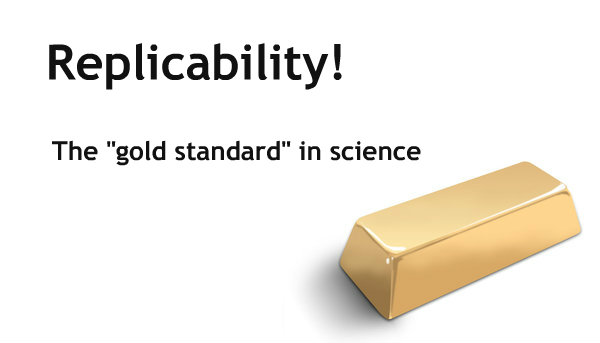
To: Heather Goldstone, Science Editor, WCAI National Public Radio
From: Eric Bibler, Rhode Island
Date: July 25, 2013
.
Dear Ms. Goldstone,
I am writing to provide you with a copy of a recent essay by Mr. Curt Devlin regarding a dangerous fallacy that has been repeatedly promoted by you, and others, regarding the true nature of the scientific method.
The essay, which refers to you by name, explains in plain English why the obsession with “peer reviewed” studies is nothing more than a ploy used by the wind energy industry — and its sympathizers — to create an artificial and illegitimate standard of “evidence of harm” from wind turbines whose practical effect — and obvious intent — is to dismiss the torrent of evidence from all over the world that demonstrates, beyond a shadow of a doubt, that these adverse impacts are occurring on a global scale.
I, too, have long been troubled by your dismissive public remarks concerning the research of Dr. Nina Pierpont’s book, “Wind Turbine Syndrome.”
Specifically, I have been amazed that someone with your training should continue to insist this work is (a) “not peer reviewed,” and (b) that the gold standard of science is peer review.
In the first instance, it seems that you have not even bothered to read Dr. Pierpont’s book. If you had, you would have discovered, to your shock and amazement, that the work was actually read in advance of publication by a distinguished group of medical doctors, including clinicians, epidemiologists and other medical researchers, all of whom found merit in the work. And if you had bothered to dig a little deeper, you would find that many other distinguished scientists who read the book after its publication (and considered the quality of the research) had commented favorably on its contribution to knowledge.
Such minimal research would not seem like too much to ask of someone who regularly reports on science for the National Public Radio.
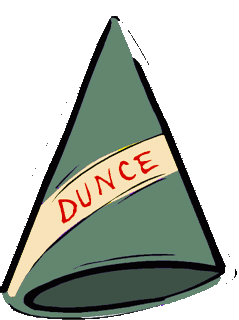
In the second instance, it is a source of constant dismay that you fail to understand the simple point that Mr. Devlin makes in his essay — namely, that peer review isn’t really worth a damn, other than acting as a screen to publication in various journals.
As you know, scientists offer competing hypotheses all the time to explain events around us, including medical phenomena that make their presence known through the assertion of symptoms without immediately revealing all of the intricate details of the mechanisms that produce the symptoms. In other words, the effects are always appreciated, first; only later — typically after a considerable amount of hard work and ingenuity are brought to bear — are the causes of those effects completely comprehended.
As the Science Editor at NPR, surely you must be able to appreciate that his is how we came to achieve a detailed understanding of every disease or medical illness on earth, including malaria, polio, mercury poisoning and mesothelioma (from exposure to asbestos).
The gold standard of science is “TRUTH” — not the “truthiness” of “peer review,” which is subject to all of the distorting and falsifying influences enumerated by Mr. Devlin — all of which are familiar and well-understood by every practicing scientist.
As Mr. Devlin cogently explains, the way we verify the “truth” of any scientific hypothesis is through “reproducibility” — not through “peer review.”
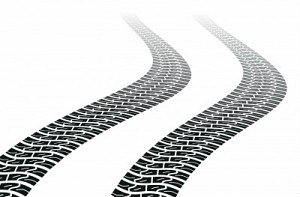
As Mr. Devlin explains, “peer review” is just an opinion; “reproducibility is where the rubber meets the road.
If scientists of all persuasions are able to reproduce the findings of a study, that adds credibility to the accuracy of the hypothesis; conversely, if other scientists — such as the paid shills of the wind energy industry and sympathetic science editors — are unable to contradict the findings of the original study, this also confers credibility on the conclusions of the study.

I regret to inform you, Ms. Goldstone, that “peer review” is only the “Goldstone Standard” — and not the “gold standard” — of science. Nothing more, nothing less. And that the “Goldstone Standard” of science is a rather pathetic and misguided one, at that.
Please also consider — in this context of our mutual quest for the truth about the adverse health impacts from industrial wind turbines — that you and your like-minded cohorts in the wind industry have regularly sneered at first person testimonials from the victims of these installations, haughtily dismissing them as “anecdotal” and “unscientific” — and therefore largely irrelevant, according to you.
You habitually and sanctimoniously dismiss all of this information, notwithstanding the fact that these testimonials and the pattern of adverse health impacts that are reported are eerily similar — virtually identical — regardless of where they come from.
All of the complainants share the following circumstances, regardless of what country or continent they inhabit:
» They live in relatively close proximity to newly installed wind turbines.
» They were doing fine before the wind turbines arrived.
» They are profoundly disturbed — sometimes physically ill — while the wind turbines are operating.
» Their symptoms disappear — or greatly alleviated — when the turbines stop operating or when they remove themselves to a safe distance.
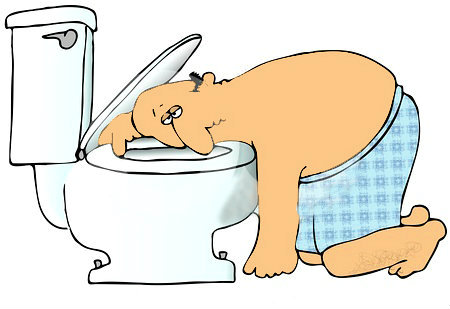
Even though there are literally THOUSANDS of these reports from residents located on six continents describing the same pattern of symptoms — and the same cause and effect — this is not “scientific” enough for you.
You want them to tell their symptoms to a scientist who will diligently record all this information as “data.” God knows where you think that money for this exercise will come from, with no profit potential for anyone. And if the victims hired their own researcher, you would doubtless declare the results to be “biased” — and dismiss them as “invalid.”
Then you want some OTHER group of scientist to review the “data” — the description of the symptoms that have been described by the victims and diligently recorded by the researcher — and to bless it as worthy of publication.
Only then will the “data” be considered to satisfy the “Goldstone Standard” of excellence — and be credible to anyone, in your view.
Do you not understand the absurdity of dismissing thousands and thousands of first-person accounts in this way, based on the idea that it is “not credible” unless it is “peer reviewed” by the editors of some medical journal?
Let me try to explain this to you a different way.
I am not a trained scientist — at least no beyond a typical high school education in the subject. But I am a practicing Emergency Medical Technician (EMT).
As you can appreciate, EMT’s are pretty low on the food chain in the rarefied realm of “science” that you inhabit. We respond to medical emergencies, we assess the condition of patients and provide emergency medical care to stabilize and improve their condition, and we drive them to the hospital in an ambulance for further treatment, if necessary. We’re not PhD’s and we’re not brain surgeons, but we’re trained to provide basic medical assistance that sometimes proves to be vitally important.
Guess what we do when we first encounter a patient in distress: We ask them to tell us their symptoms. Why did they call 911? What’s wrong? What’s different? What are they feeling?
And do you know why we do this, Ms. Goldstone?
Because the patient is the only source of this information!
I can observe the scene of an accident. I can tell if there has been a significant “mechanism of injury” if a car has hit a tree at high speed. I can tell if someone obviously has a broken arm. But I can’t tell if his abdomen hurts, if he is dizzy, or if he has chest pain or tingling in his legs.

Do we summon a doctor with a clipboard to interview the patient and tabulate the results in a fancy spreadsheet — and wait for him to compile similar data from 50 other car crashes — before addressing the immediate problem?
Do we dismiss the information we receive from the patient until some other team of scientists has had a chance to subject the first scientist’s findings to a “peer review” — the “Goldstone Standard” — to confirm our suspicion that the patient might be in serious jeopardy if we do nothing?
Do we tell the patient that we’d like to believe him — that we certainly sympathize with his predicament — and that we think it’s highly possible he might be telling the truth — but, unfortunately, we can’t really do anything until the scientists all get together and publish their findings?
Or do we tell him — as in the Town of Falmouth, where your husband is a member of the Board of Health — that we’d like to take him to the hospital — God knows he’s in bad shape — but the Board of Selectmen has decided to limit ambulance trips to one a day — as part of their “balancing of interests” and to save the taxpayers’ money — and, unfortunately, we already made a trip to the hospital earlier in the day — so he’ll just have to suck it up?
No. We don’t do any of these things.
Why?
» Because there is only one expert on “symptoms” — and that is the patient. We cannot see or hear his symptoms. He feels them and he reports them to us.
» Because have no reason to doubt the patient — especially when we know that similar patients in similar circumstances are likely to report the same symptoms. Why should I be shocked if a victim in a car crash reports neck pain? Or if a diabetic is dizzy and disoriented? I know from experience that one thing leads to another — without a “peer review.”
» Because the patient’s “first person testimonial” seems credible — particularly if the patient has no reason to lie. Am I to suspect that victims of car crashes are part of some vast global conspiracy because they report similar symptoms after the same “mechanism of injury” in the absence of a “peer review”? Really? Why do they do it? How did they manage to communicate with each other and make sure they got their stories straight — time after time after time, a thousand times, in a thousand places?

The reason we don’t apply the “Goldstone Standard” and insist upon a “peer review” of this information is simple: If we did, we would have a lot of dead and dying patients. People would be in agony, walking around with broken arms. Or in a diabetic coma. Or suffering anaphylactic shock from an acute allergic reaction. Or experiencing the initial stages or the warning signs of an imminent heart attack — while we all awaited the “peer review” of our initial assessment.
It’s the same with “wind turbine syndrome” — a simple term which you, and others, love to ridicule and dismiss. This is a straightforward reference to “a concurrence of symptoms” that tend to occur in people who live too close to wind turbines. No brainer.
How do we know this? Because the victims report this same “concurrence of symptoms” — or some variation thereof — over and over and over again in the presence of wind turbines.
How did Dr. Pierpont discover this? She contacted a wind turbine site and asked the residents to describe their symptoms. Then she recorded the results of these “first person testimonials” — as they were described to a scientist. She then organized and compiled them in a manner that passed “peer review” with flying colors (fulfilling the rigorous terms of the “Goldstone Standard”). Then she published them to alert the world that she thought there was a burgeoning problem that merited our attention — and further study.
As Curt Devlin notes, Dr. Pierpont also called attention to the limitations of her study — primarily the modest sample size — and invited others to “reproduce” her studies to validate the truth of her findings.
In fact, other researchers have validated her findings, and no researcher has invalidated her conclusions.
We can go further. There is a growing consensus — even at the Massachusetts Clean Energy Center (which never laid eyes on a wind turbine project it couldn’t love, including proposals to install 500-foot wind turbines less than 600 feet from residences in Eastham and Bourne); and even at the Massachusetts Department of Environmental “Protection”, headed by Ken Kimmell, author of the ill-fated Wind Energy Siting Reform Act to ram wind turbines down the throats of recalcitrant communities and who engineered the infamous MA DEP sham science study — that wind turbines cause serious adverse health impacts.

Why? Largely because it is increasingly difficult — if not impossible — to ignore the voices of thousands of people who have suffered the direct consequences of these installations — the patients whose symptoms even you will one day grudgingly acknowledge — no doubt with a wistful sigh, saying: “If only we had had the peer-reviewed studies then that we have today, we could have avoided this whole problem.”
Although the main reason is that sooner or later, with or without a “peer review” and with or without any reference to the “Goldstone Standard,” the truth always asserts itself.
I hope you don’t mind that I am circulating this letter to some of your peers in the press who, like you, regularly report on wind energy in Massachusetts. I will also be posting it on the same website where Curt Devlin published his critique of the fundamental bankruptcy of your religious devotion to the concept of “peer review” — even as you ignore the immense weight of evidence right in front of you on this important subject.
I hope that you will take the opportunity to respond, so that we can all gain a better understanding of your point of view, and that you will post your response on the same website for the benefit of all.
Sincerely,
![]()
Note: None of the opinions expressed above have been “peer reviewed.”
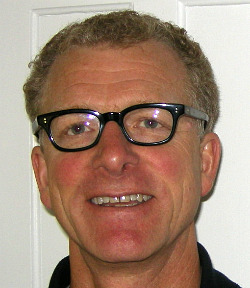
Eric Bibler

Comment by Sarah Laurie, MD, CEO Waubra Foundation on 07/27/2013 at 7:29 pm
Thank you, Eric!
The clinical findings of Drs Harry, Iser and Pierpont and others since that people exposed to operating wind turbines develop a characteristic range of symptoms, which correlate with exposure to operating sources of ILFN be they wind turbines, or fans or large compressors of other kinds, are not only replicated around the world, as evidenced by the reports from the residents and increasingly their health practitioners. They have also been known to acousticians for years, and given the label of “annoyance.” This is a conveniently useful way of hiding the severity of the impact.
I have even heard one noise engineer working in government say, smiling, that there was one lady who became suicidal, but they never found the source of the noise. She suicided, and the way he smiled was chilling. Such an event is a tragedy, yet there was little sign of it in his attitude. I have heard women in this situation tell me they are told they are given the label “hysterical” and then dismissed by the noise engineers. This is a disgrace, and must not continue.
Acousticians financially independent of the wind industry, and who truly do abide by their codes of ethics to protect the health and safety of the community, know there is a serious problem, and are increasingly speaking out publicly and researching in this area.
Those “professional” noise engineers who have a clear and SIGNIFICANT financial conflict of interest, AND who are choosing to behave unethically, do not speak out against what is currently happening by putting in accurate noise impact assessments to the communities impacted by planned developments.
Some of them deny the suffering, and publicly and privately attack those in their profession and other professions, including medicine, who ARE acting professionally and ethically to both publicise and investigate these serious problems. Others admit they know the suffering occurs, including home abandonments, but say “they are acting for their client,” i.e., the noise polluters, as if the plight of these people so damaged by their conduct is none of their concern or business.
They need to carefully re-read their codes of ethics.
This is clearly unethical behaviour on the part of some acousticians, and is not confined to wind turbines. The Waubra Foundation helps people badly impacted by noise and vibration from a range of sources, including mining (coal and gold), gas-fired power stations, gas peaking plants, large compressors from air conditioners and refrigeration units, in both urban and rural environments, and field compressors used for coal seam gas extraction activities (CSG). The acousticians have got away with it because of the lack of knowledge of the existing research, such as the Kelley and Hubbard papers on noise perception inside homes and acoustic resonance, and because of the power imbalance between the victims and the perpetrators and their professional “enablers.”
It is nothing less than serious abuse.
I think the time has come, with this knowledge of the Kelley research from the 1980s which was presented at a large wind industry conference, for the words “criminal negligence” and “willing blindness” and “fraudulent denial” to be used in relation to those acousticians who continue to deny the existence of a serious problem, and who continue to write noise pollution guidelines for governments which do not include the full spectrum of measurement—i.e., do not include those parts of the sound frequencies known 30 years ago or longer to damage health.
Government authorities charged with the responsibility for monitoring noise pollution also need to take note.
Comment by Annette Smith on 07/27/2013 at 9:10 pm
Here are some examples from Vermont. All from this week, in the news are complaints about noise and health problems around Lowell, Sheffield and Georgia Mountain big wind turbine projects, plus an NPS 100 wind turbine that is giving its neighbor headaches:
Website of neighbors of First Wind’s Sheffield Vermont wind project trying to raise money for relocation:
http://www.gofundme.com/3k4q10
Neighbors complain of Vt. wind woes
http://www.wcax.com/story/22943806/neighbors-complain-of-vt-wind-woes
Compliant turbines draw noise complaints
http://www.miltonindependent.com/compliant-turbines-draw-noise-complaints/
Wind turbine creating headaches, neighbor says
http://www.wptz.com/news/vermont-new-york/burlington/wind-turbine-creating-headaches-neighbor-says/-/8869880/21120896/-/item/0/-/lo4rbyz/-/index.html
Vermont’s Green Mountain Power Lowell Wind Project
Hearing on violation of Certificate of Public Good for exceeding Vermont’s very lenient noise standard will be held on August 8. Here is the prefiled testimony with noise diary from a neighbor living 4500 feet from 21 Vestas v112 3MW turbines located in a ridgeline array:
Shirley Nelson’s Prefiled Testimony and Appendices http://vce.org/ShirleyNelsonPreFiled_7628_072613.pdf
Her symptoms are typical of what people are suffering all over the world. Naturally, the wind developer denies it:
Utility touts wind power project’s noise record, Vt. regulators fault it
http://www.dailyjournal.net/view/story/37b62e73a8f247fca893914e6ef8dfcb/VT–Lowell-Wind/
Comment by Tom Whitesell on 07/27/2013 at 9:41 pm
Note: another demonstrated source of severely disruptive very low frequncy noise/vibration is hydrofracturing – drilling for natural gas. This will become a similarly common, wide spread problem as ‘fracking’ becomes more prevalent in populated areas.
Back to the subject or peer-reviewed science: Regardless of the peer review issue, and acknowledging Eric Bibler’s natural and professional response to the subjects’ own description of their personal experiences, I would challenge anyone to spend several hours reading the enormous compilation of letters, essays, articles, interviews, and viewing the photos and videos, which have all been sent to Dr. Pierpont and her husband Calvin Martin, ALL of which have been posted on their website, and then go on to dismiss Wind Turbine Syndrome as psychosomatic, fanciful, conspiratorial anti-wind, or as anything other than heart-wrenching testimony to enormous suffering.
Comment by Andreas Marciniak on 07/29/2013 at 2:48 pm
Thank you, Eric!
I been reading both of you Letter and found them very well written and to the point, thank you for taking the time to do this, I have and will post and sent this to all my contacts .
NOT GREEN , NOT CHEAP , NOT RELIABLE ,and come with a very Bad side EFFECT to the Environment and the People that have to leave with Industrial Wind Turbines.